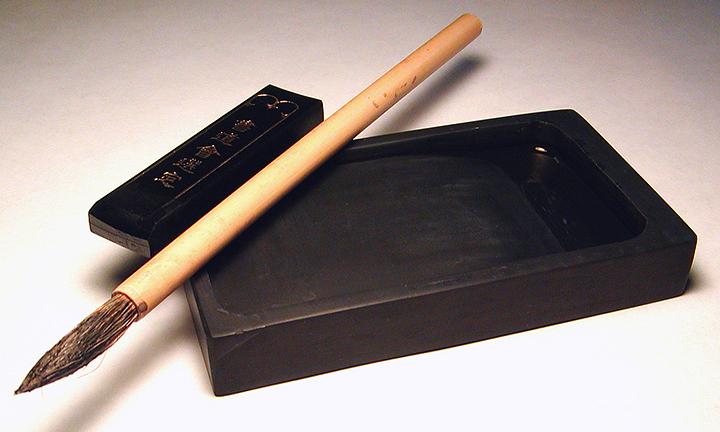With so many on the market now it is hard to keep up with them. Over the past few month my collection as grown more than planed. As there are so many out there I am going to provide you with my list. I would love to hear about what ones you have in your library.
-The Ancient Art of Tea by Warren Peltier
-The Way of Tea by Aaron Fisher
-The Story of Tea by Mary Lou Heiss and Robert J. Heiss
-Urasenke Chanoyu Handbook One by Soshitsu Sen XV
-The Art of Tea in China by Gou Danying Wang Jianrong
-The Book of Tea and Coffee by Joel, David and Karl Schapira
-A Tea Lover's Travel Diary : Phoenix Single-Tree Oolong Tea, Tie Kuan Yin Oolong Tea by Jason C.S Chan
-Classic of Tea/The Sequel to The Classic of Tea by Lu Yu/Lu Tingcan
-The Book of Chuang Tzu
-Tao Te Ching by Lao Tzu
-The Tea Enthusiast's Handbook by Mary Lou Heiss and Robert J. Heiss
-365 Tao by Deng Ming-Dao
-Writings from the Zen Masters (Great Idea Series)
-The Book of Tea by Kakuzo Okakura
I included my Tao/Zen books too as some of the teachings feed back into the history of tea. I like learning about the context of certain ways different eras made their tea. Japanese Tea Ceremony is a great example.
July 19, 2012
July 11, 2012
Sumi-E- Part 1: Intro
It has been over two years since I graduated from OCAD U and crated “Reclaiming the Body”. I used Sumi-e ink to create my series which became my thesis. Each work is detailed; it seems more like a watercolour than an ink painting. Since finishing and continuing my research on my materials I have begun to teach myself Sumi-E.
Sumi-e, means ink picture in the most simple translation. The painting style embodies the Japanese Zen ideal of simplicity. The materials are even simplistic. All you need is a brush, ink, ink stone and some paper (preferably absorbent rice paper). Another portion of this art form is Shodo which is calligraphy. Small stories, poems, or even a short saying are added to works occasionally.
The main part of this art form is the Ink and ink stone, as any brush can be used (I prefer Chinese brushes or sable though because of their ability to hold alot of paint/ink). The ink is in the form of a stick which is ground on the ink stone with a touch of water. Both come in various forms from very ornate to basic stick and stone form.
The paper can cause some headaches; it’s fragile and super absorbent. You have to let go of control when painting on rice paper or else you will be setting yourself up for failure. Of course this medium can be used on any surface if you desire. Watercolour paper is just as absorbent but acts differently. Even contemporary Sumi-E artists utilize alternative papers for the different feel and look which the paper allows for.
July 8, 2012
Watercolour paper Part: 1 Cold , Hot or Rough
Chooseing watercolour paper for a work will depend on what you want it to do for you.
This post will be a small mini series of different components of picking paper. Lately I have been either A- useing a paper I have used before from a pack or B- picking paper by how it feels on my hand. After much debate it is time to go back to my roots in watercolour and have a mini refresher course on the dynamics behind these papers.
Cold Press: Textured surface which is in between rough and hot-pressed papers. Most often used to benefit from the texture that shows up when painted on.
Hot Press: Fine grain, smooth surface with almost no tooth. Paint dries quickly. Ideal for large even colour washes. Great for detail and do not wish to use granulation.
Rough: a rough surface. It was pressed between the felts on the paper machine and the roughness of the felt (blanket) is embossed in to the wet surface.
I have a collection of paper right not consisting of mostly Hot pressed paper. Majority of those are on a watercolour block. The block is very handy to have around as it is already “stretched” which I will try to address in another post. Alternatively since university I have been buying individual sheets. I generally cut them down to a more manageable size but I have used it on occasion to create larger works. A great example is “Sun Wukong” I did in January for my brother who loves the story “Journey to the West”.
Labels:
paper,
refrence,
Studio Refrence,
Studio Research,
Sun Wu Kong,
supplies,
watercolour
July 3, 2012
Sketch Easel- Windsor & Newton Dart
Today I finally purchased an easel I was eyeing last weekend in Markham. This portable easel folds up easily and is sturdy once you get used to all of it's nobs. Last year my Alvin sketch easel died on me completely, it was about time to get a new one. Better yet, a HUGE upgrade! I could not wait to show everyone. I have a new work in progress already on it and hope to finish it tomorrow after work. I am slowly working on the articles for the Studio Research component of this blog. Stay tuned for more!
Subscribe to:
Posts (Atom)
©
Tea Journey - Living beyond your cup | All rights reserved.







